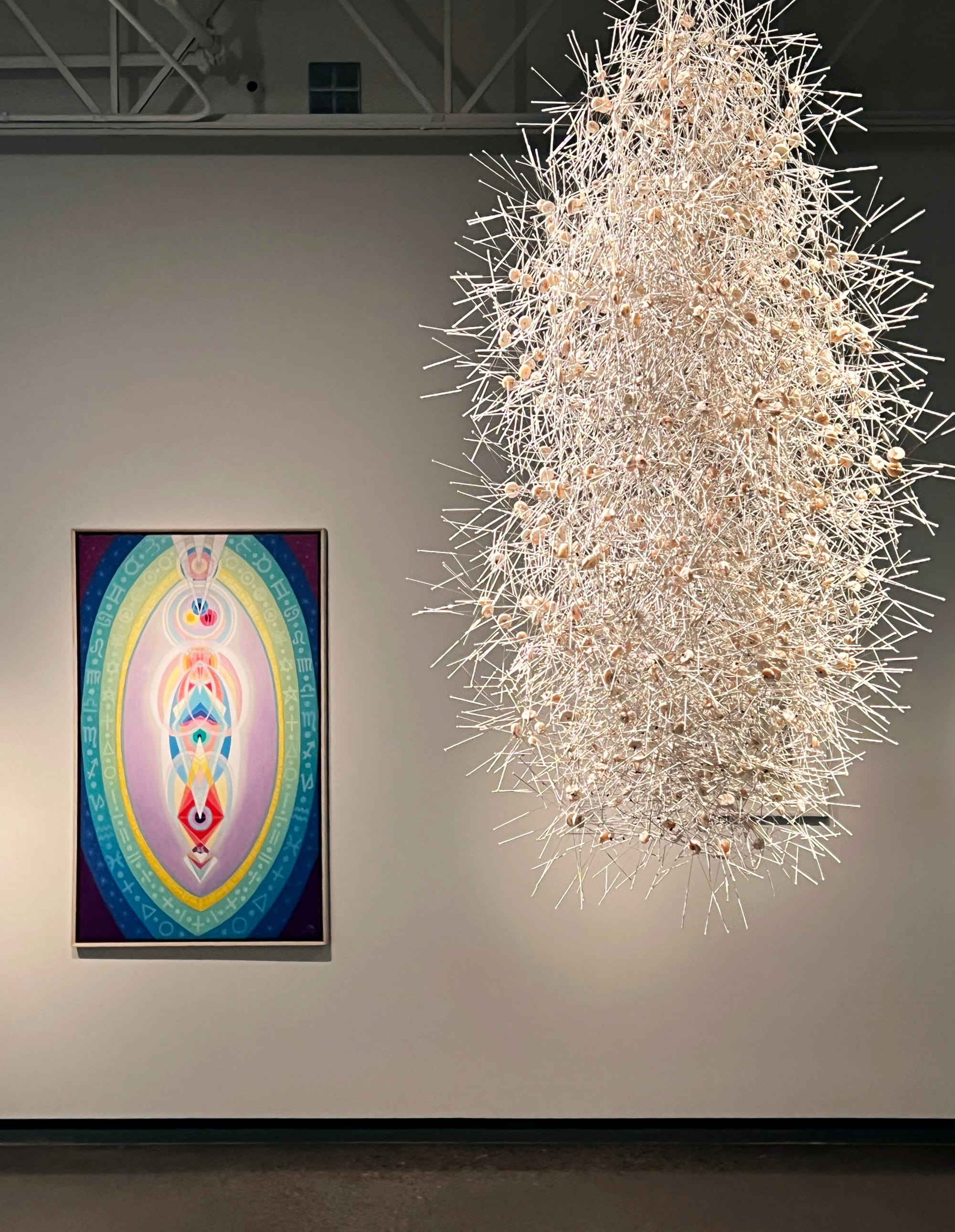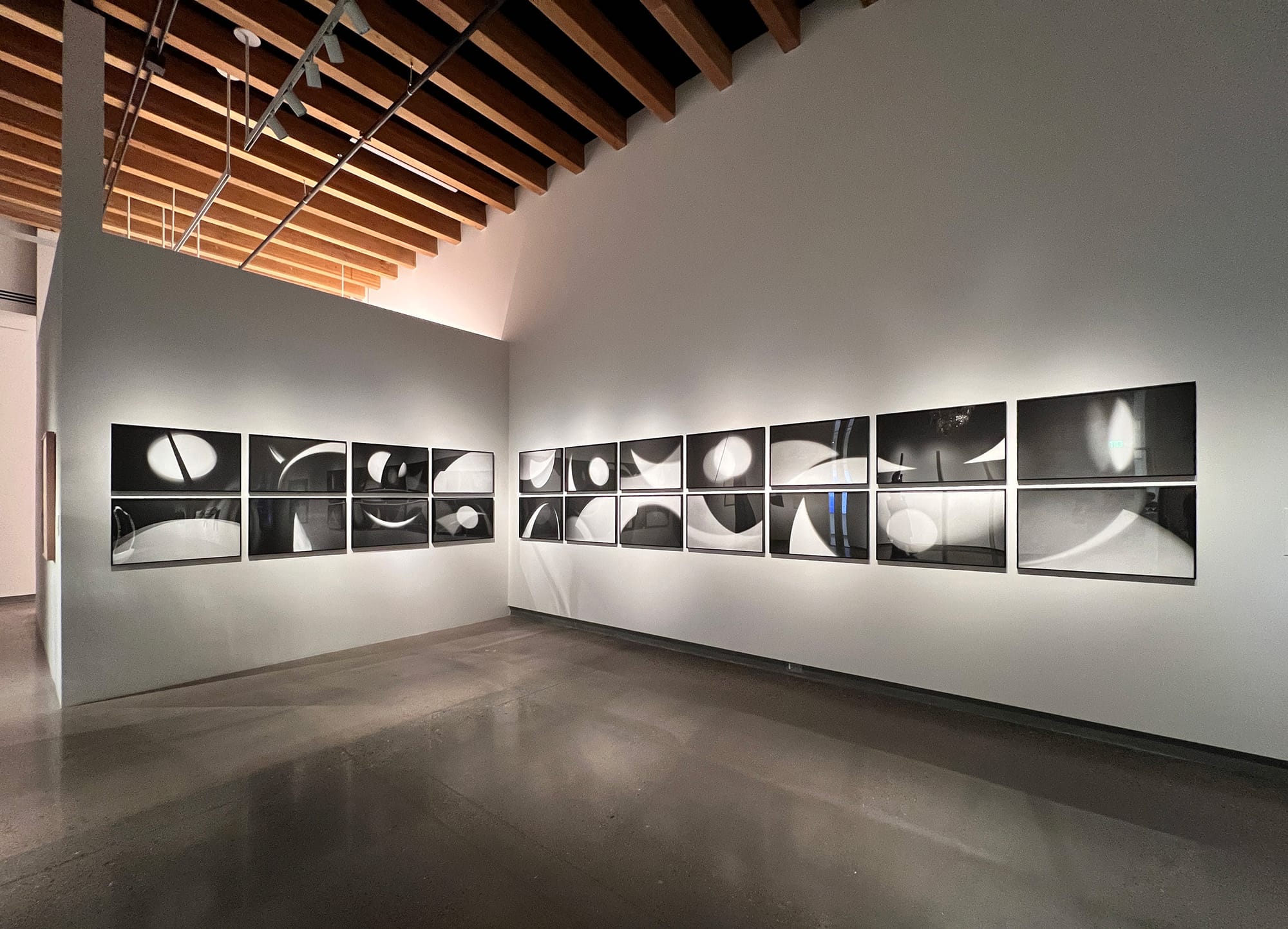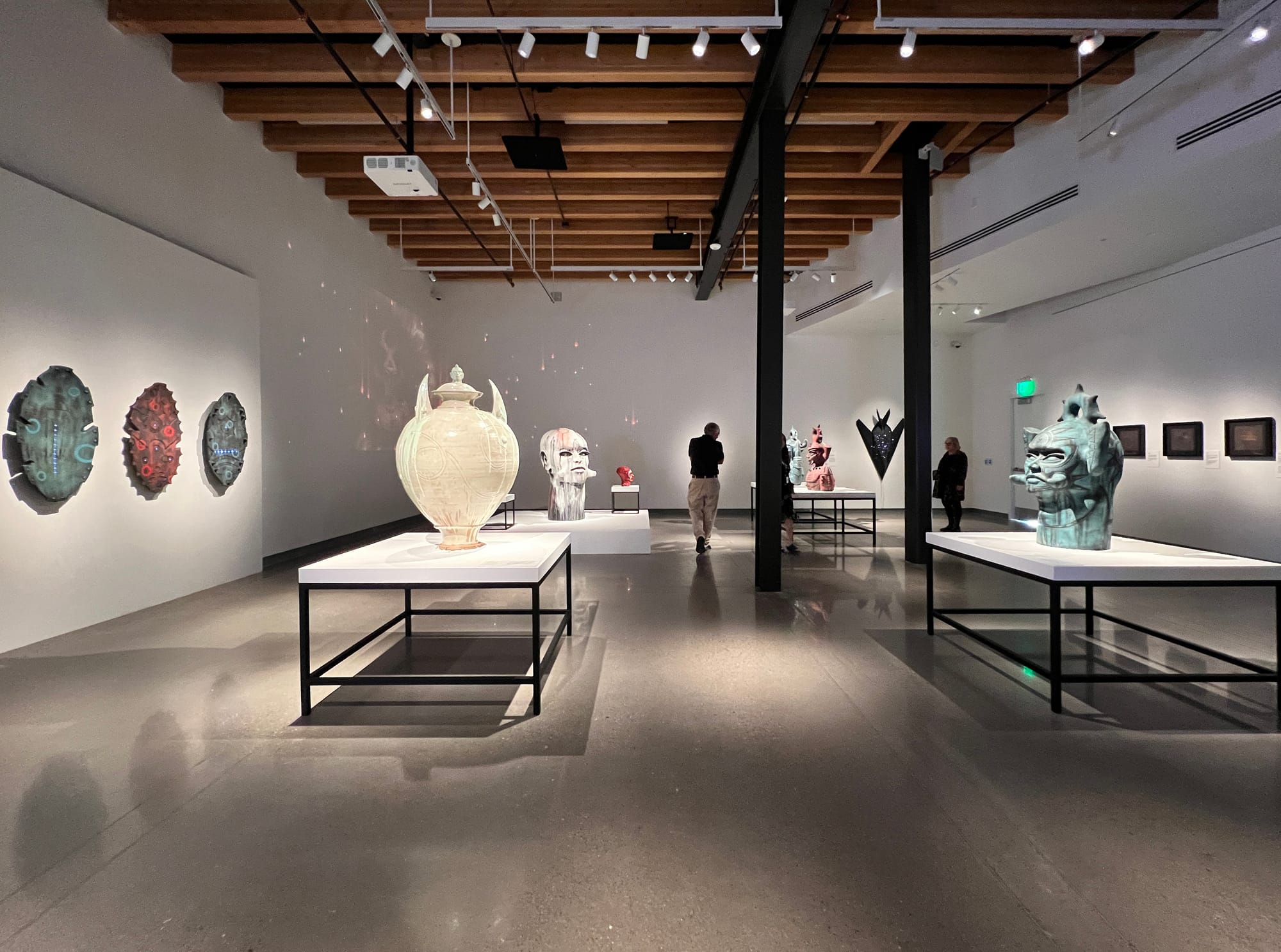A New Jewel in the Crown of Santa Fe’s Museum Scene
The New Mexico Museum of Art’s new extension, Vladem Contemporary, pays homage to Santa Fe’s past and present.

When I sat down with Devendra Contractor and Deirdre Harris of Devendra Narayan Contractor Architects (DNCA) to discuss the design for the New Mexico Museum of Art Vladem Contemporary, Contractor gently cupped one hand over the back of the other. “It’s a gesture of preservation,” he explained. The bodily gesture of one hand protecting the other is a poetic metaphor for the new structure that encapsulates an existing 1936 warehouse building, located on a busy intersection in Santa Fe’s Railyard Arts District.
“There was always the notion that the original territorial style brick warehouse would be saved,” said Contractor. The 18,000-square-foot addition, designed by DNCA in partnership with StudioGP, bridges the existing 20,000-square-foot brick and steel warehouse. The dual axes of the combined architectural forms pay homage to Santa Fe’s past and present, symbolizing the city’s fiercely unique embrace of its architectural and esthetic histories, while emphatically nudging it beyond provincialism.

The new facility is steps from the Santa Fe Railyard train depot, galleries, and SITE Santa Fe — until now, Santa Fe’s main public venue for contemporary art. At either end of the spacious lobby, the brick walls of the warehouse lend warmth and texture to the crisp new space. DCNA’s Deirdre Harris said, “Movement though the building is self-choreographed; you can experience it from any direction.” Indeed. On my visits, I observed throngs of museum attendees, most visiting for the first time, moving through the space freely and intuitively. The museum shop is located discreetly across the south entrance’s breezeway, refreshingly and effectively positioning commerce away from the art viewing experience. The breezeway itself is graced with an overhead light installation, “Astral Array” (2023), by Leo Villarreal.
The Vladem boasts 6,400 square feet of collections care and storage, including viewable storage; a generously proportioned Artist-in-Residence Studio (currently occupied by Oswaldo Maciá, whose eight-channel sound installation, “El Cruce,” fills the Studio Terrace with recordings of the wind and the chatter of migratory birds, bats, and insects, all blending with the clamor of the Railyard); the stunning Rooftop Terrace, from which visitors can take in views of Santa Fe; and a 2300 square foot Education Center.
The two exhibition galleries, totaling 7,000 square feet, are the real stars of this compact but hospitable building. They are amply proportioned, gorgeously lit, and beautifully appointed. The Vladem’s inaugural exhibition, Shadow and Light, was conceived and spearheaded by former Head of Curatorial Affairs, Merry Scully, and carried over the finish line by the New Mexico Museum of Art’s able curatorial team. It presents a range of spiritual, psychological, emotional, and cosmic responses to the light, color, and space of the Southwest. The absence of light is addressed, too, most imaginatively by Erika Wanenmacher’s “Stealth to Bring You Home” (2007), a painted balsa wood sculpture of a stealth bomber covered with light-emitting diodes representing the constellations in the night sky.

The exhibition deftly connects works throughout the two galleries. Transcendental Painting Group stalwart Emil Bisttram’s painting of womb-like, concentric lozenge forms, “The Archetype” (1974), is in close range of “#9.2” (2006), Jennifer Joseph’s shimmering, suspended sculpture made of acupuncture needles and wire. Together, they hint at modalities of healing, protection, and transcendence. Joseph’s piece also dovetails with Angela Ellsworth’s sculptures of cosmic bonnets and bloomers, as in “Pantaloncini” (2017–2020), made of tens of thousands of corsage and dress pins. They allude to sacred Mormon garments, the religious practices of penitents and ascetics, the control of women via restrictive standards of dress, and, amusingly, the Tin Foil Hat brigade who believe that their headgear wards against electromagnetic fields and mind control.

Agnes Martin, Judy Chicago, Nancy Holt, and Harmony Hammond anchor the exhibition and provide entree to a stellar range of works by Charles Ross, Helen Pashgian, Ron Cooper, and Florence Miller Pierce. Norman Zammitt’s (American, Mohawk) mid-70s gem-like color spectrum paintings pack a punch, despite their modest scale. Susan York’s new commission, “Cu:C” (2023), nestled in a discreet corner, juxtaposes solid slabs of copper and graphite, proportioned in the golden ratio. They cast shadows and reflect light, activating kindred works sprinkled throughout the gallery. Virgil Ortiz’s (Cochiti Pueblo) massive ceramic sculptures and accompanying video are a powerful reimagining of the 1680 Pueblo Revolt against Spanish occupation that blends historical fact with science fiction.

New Mexico Museum of Art Executive Director Mark White noted that “Shadow and Light will be followed by Off Center: 1970-2000, an exhibition of contemporary work from the pivotal period of the last three decades of the 20th century. It will be presented in three iterations, curated by Christian Waguespack, Katherine Ware, and our new Curator of Contemporary Art, Alexandra Terry.” According to Scully, “The impetus for Shadow and Light was to show people what we have in the collection. The New Mexico Museum of Art is not just a regional institution. We’re part of the bigger dialogue.” Clearly, the exhibition programming for the Vladem is off to a vigorous start, matched by the New Mexico Museum of Art’s revitalized commitment to accessibility, education, and community. Assistant Curator Katie Doyle said, “We’re thinking of new ways of programming, new ways of presenting ourselves and showing up; we want to sprinkle in variety and the unexpected, and we want to open up to all of the things contemporary art is and can be.”
Shadow and Light at the New Mexico Museum of Art Vladem Contemporary (404 Montezuma Ave, Santa Fe) will continue through April 28, 2024.




